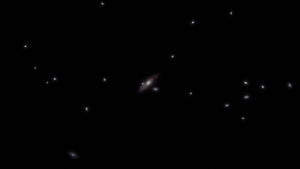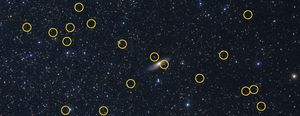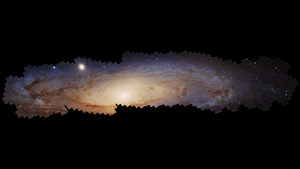Sensing the Universe & Multimessenger Astronomy
Filters

Technicians have successfully installed two sunshields onto NASA’s Nancy Grace Roman Space Telescope’s inner segment. Along with the observatory’s Solar…

Swift launched into orbit on Nov. 20, 2004, as NASA’s Swift Gamma-ray Observatory. In 2018, NASA renamed the spacecraft in…

This is a wide-angle view of the distribution of known satellite galaxies orbiting the large Andromeda galaxy (M31), located 2.5…

This animation begins with a view of the neighboring Andromeda galaxy. We zoom through a scattering of foreground stars and…

Located 2.5 million light-years away, the majestic Andromeda galaxy appears to the naked eye as a faint, spindle-shaped object roughly…

This is the largest photomosaic ever assembled from Hubble Space Telescope observations. It is a panoramic view of the neighboring…

This is the largest photomosaic ever made by the Hubble Space Telescope. The target is the vast Andromeda galaxy that…

This video opens with the largest photomosaic ever assembled from Hubble Space Telescope observations. It is a panoramic view of…

In the years following the launch of NASA’s Hubble Space Telescope, astronomers have tallied over 1 trillion galaxies in the…


































